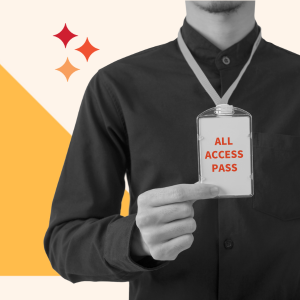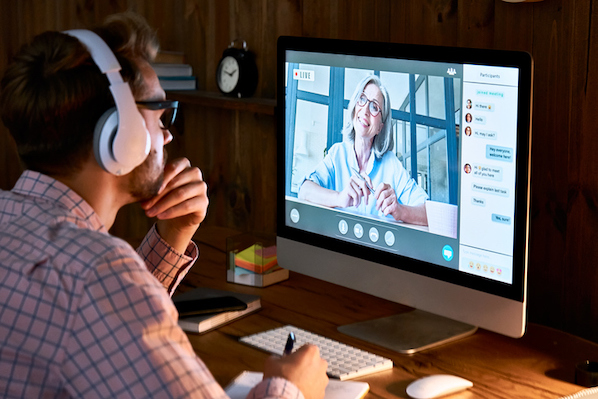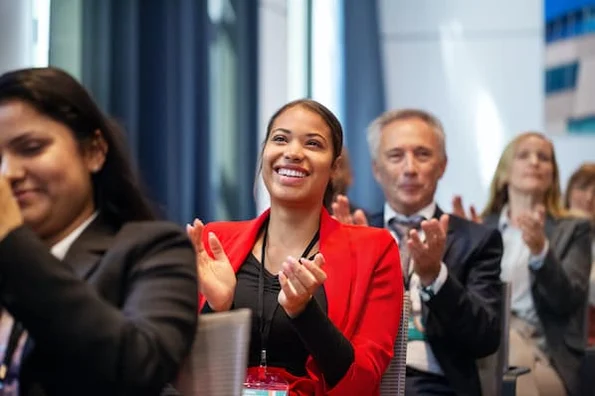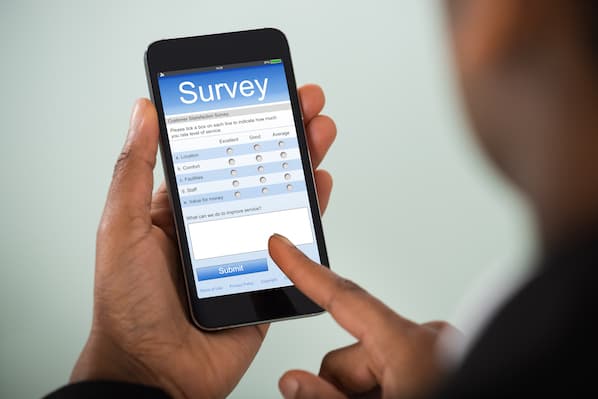What is event branding?
Like a company brand, event branding is made up of many elements including a logo, website, app, marketing materials, stage design, speakers, sponsors, and event swag.
Some elements are similar to an organization's brand, but the event brand must stand on its own. Think about how branded events — like Dreamforce, INBOUND, or 29Rooms — are separate yet related to the companies hosting the events. This is possible with a combination of onsite branding (i.e., banners, booths, stage design, and swag) and digital branding (i.e., website, imagery, and marketing).
It's important to note that event branding is a part of event marketing but requires its own skill sets and strategies.
The key to a well-attended event is to make your branding cohesive and recognizable, because a consistent brand presentation has been seen to increase revenue by 33%. Beyond a thoughtful branding plan, you need to promote the event, create memorable moments for attendees, and know how to gauge success. If you can make all of that happen, you'll reap the rewards of a well-branded event.
Benefits of Event Branding
Think of the best event you've attended. You can likely picture the people you met, the food, the speakers, and even the after-parties. Branding an event shapes how everyone involved—speakers, attendees, employees, and sponsors—remembers the experience.
For example, one session in the Adobe MAX event showed me how to use new features in my Lightroom mobile app. I only learned that skill because Adobe selected speakers who provided value for the audience. They also had a moderator who shared immediate takeaways. And they sent me a follow-up email with the recorded session in case I needed to refresh my memory afterward.
I now follow that particular speaker on Instagram and even renewed my Adobe subscription after joining the event. Yes, I knowingly fell into the flywheel.
The point is, a branded event can help generate leads, build loyalty and credibility, and offer support. Attendees are more willing to buy into your brand promise (and eventually, into your product or service) if you provide a valuable experience.
So, if you do your job well, people will have a good experience — which generates positive emotions — and will become customers or advocates for your brand.
5 Event Branding Ideas
Creating a unique brand that resonates with your audience is about crafting a story that you and your attendees will tell. That's why successful event branding carries one message throughout every touchpoint. For inspiration on how to tie your event together, look through these examples of well-planned events around the world.
1. Website
A website is the hub of an event, so it needs to set the stage for the brand. This is the place to share information on the event's purpose, dates, registration, speakers, sponsors, merchandise, and FAQs.
It should be easy to navigate and make people excited to sign up. This is exactly what the TechCrunch Disrupt website does; It's straightforward, yet effective. And the no-nonsense branding is aligned with the modern style of innovative tech companies.

Image source
2. Marketing
Every event planner's nightmare is lackluster attendance. To make sure your event is buzzing, put time into marketing the event with social media posts, emails, and ads. Check out The Ultimate Guide to Event Marketing to dive into the details.
For event branding, ensure your messaging and imagery are cohesive across all channels. You want to give your audience multiple opportunities to learn about, sign up for, and share your event.
The #follow20 Design Festival is a great example of how consistent branding can help people recognize an event both online and in-person.

Image source
3. Design
A solid marketing plan is nothing without consistent design. This includes colors, logos, typography, photography, graphics, swag, posters, and stage design. The studio Hybrid Design perfectly coordinated Pinterest's Knit Con 2019 through vibrant, thoughtful touches that tied the values and creativity of the Pinterest team together.

Image source
4. Swag
Event swag may seem unnecessary, with virtual events taking over in-person meet-ups. But that's not entirely true. Promotional Products Association International (PPAI) estimates that promotional products are the most effective form of advertising across all generations, and over 80% of promotional products are used for more than a year.
While branded products have been held under the fire for causing environmental harm, unsustainable swag isn't the only option these days. Digital gift cards, online workout class passes, free software, and charitable donations are all environmentally responsible giveaways.
The trick is to find swag that suits your brand, so don't shop for stress balls and stickers if you're hosting a tech conference. SXSW is a good example of how to choose merch that's reusable and relevant to the event brand.

Image source
5. Videos
Video marketing has been on the rise for the past few years, and the pandemic pushed the need for video further than ever. Wyzowl found that the pandemic has impacted how much video content 68% of consumers watched online, with 96% reporting an increase.
For event branding, the INBOUND video shown below strikes a balance between sharing event recaps, highlighting speaker sessions, and emphasizing the brand's values.
Outdoor Event Branding
Outdoor events can be a good alternative to virtual events. This type of event is ideal for networking meet-ups, company picnics, award ceremonies, or festivals. And if you take the proper safety precautions, attendees will feel secure and enjoy the hard work you put into the experience.
There are a few things to consider when planning outdoor event branding. Depending on the season and location, you may need to weather-proof the event. Signs and banners need to stand up to conditions, and people need a place to escape the heat, chill, or rain.
Take advantage of these outdoor quirks to create unique branding moments. Set up plenty of spaces for small groups to gather that have fun opportunities for people to interact with your brand. To keep people socially distanced, consider branded floor decals to mark proper distance or give groups different colored wristbands to encourage people to stay together.
For instance, Seltzerland held successful outdoor events in 2020 thanks to creative thinking and smart branding. Seltzerland organizer Kate Levenstien petitioned to move the events to recently-opened golf courses.
She followed local COVID restrictions, brought dozens of beverage companies on board, ordered swag, and did test runs to check the safety of each space on the course. The result? Nine successful outdoor events across the US during a year of rolling lockdowns.

Image source
As you plan your next event, remember that event branding is more than a logo and company colors. Designing a thoughtful brand for your event will not only ensure it resonates with your company, but it will also make it easier to engage your audience and let everyone leave with valuable information. There's nothing better for next year's attendance than a memorable experience everyone wants to share.
Event Marketing



![11 best event registration software tools [+ what makes them great]](https://53.fs1.hubspotusercontent-na1.net/hubfs/53/65_8%20Best%20Event%20Registration%20Tools.png)






![What Is a Breakout Session? [+ How To Plan Your Own]](https://53.fs1.hubspotusercontent-na1.net/hubfs/53/breakout-session_2.webp)

![7 Types of Corporate Events [+ Virtual Event Ideas]](https://53.fs1.hubspotusercontent-na1.net/hubfs/53/corporate-events.jpg)